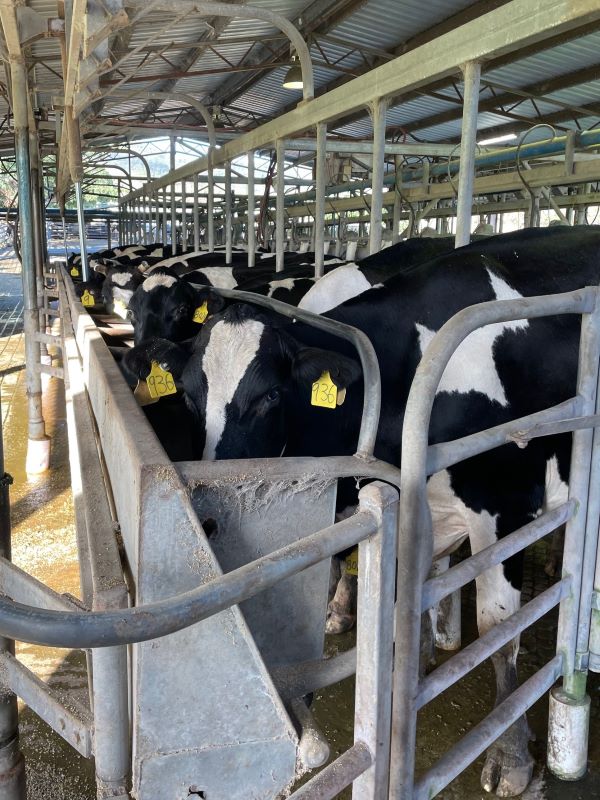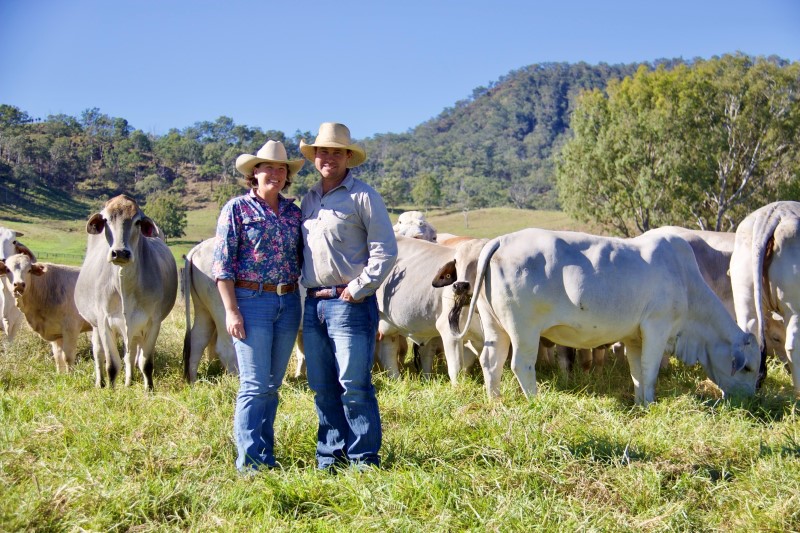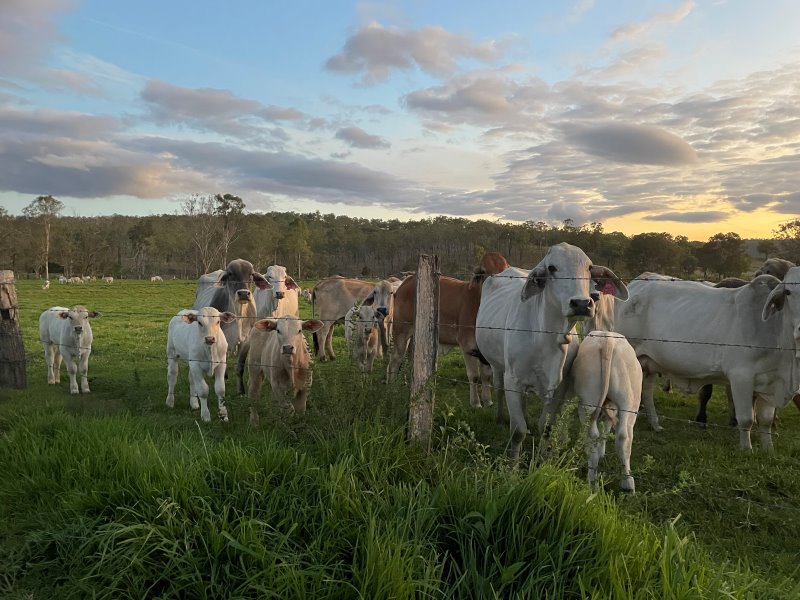Drought Loan feeds crucial cattle transition for Queensland farmers
16 July 2024
When James and Bridget Brown qualified for a RIC (Regional Investment Corporation) loan, it brought an opportunity to take their dairy business at Christmas Creek, Queensland in a new direction.
James’s family had been dairy farming at their property Migunburri for almost a century but with staffing challenges, low milk prices and severe drought conditions in 2019, the couple decided their future lay in beef cattle.
“When James and I started a family, it really hit home how little time he had to spend with our children,” Bridget said.
The non-stop routine of milking the cows twice a day along with feeding, cropping, farm maintenance, caring for and moving the cattle around paddocks meant James would often return home after dark when the kids were in bed.
“We had some amazing staff over the years, but never consistently enough for us to be able to completely step back from the milking side of the operation, and allow us to plan time with our family,” she said.
“That’s when we decided it was time to look more seriously into the possibility of running a beef enterprise.”
James had been working on the farm since 2004, completing succession from his father, Peter, in 2018.
He had always had an interest in beef cattle.
“Dairying is a 365-day-a-year job and it is not kind on families,” James said.
“The 2019 drought was the worst both myself and my father had ever seen.
“When there was no rainfall, the creeks dried out and we were relying on bores for irrigation with no rain in sight, we were getting quite nervous.”
The RIC Drought Loan enabled the Browns to focus on keeping their dairy cattle producing.
“Not only were we in severe drought, but we were also facing some of the financially toughest times within the dairy industry,” he said.
The Browns used their RIC loan to refinance part of their commercial debt, which gave them enough breathing space to ultimately pursue the transition to beef cattle, completing their final milking in March 2022.
“The RIC loan was integral — to have the concessional rate allowed us to take the leap and have confidence in that particular part of our finances,” Bridget said.
“It took the pressure off.”
RIC loan used to enable transition
RIC Drought Loans are available for eligible primary producers to help prepare, manage through, and recover from drought.
Farmers can apply for up to $2 million in financing over a 10-year loan term which includes interest-only payments for the first five years.
Drought Loan applicants must meet key eligibility requirements which include providing a drought management plan, retaining a minimum of 50% commercial debt, and demonstrating a financial downturn over a minimum 2-year period.
The RIC low variable interest rate is reviewed every six months, with repayment schedule options (monthly, quarterly or yearly) tailored to suit the farm business, allowing farmers to better manage their cash flow.
The Browns were lucky enough to sell their entire dairy herd of Holsteins and Jerseys to another dairy in the region and bought background cattle, mostly Euro/British cross, supplying beef to feedlots and finishing cattle to supply major supermarkets.
They also bought Brahman breeders, along with Charolais bulls, for their future feeder replacements.
“It’s definitely an improvement during the dry periods because we can forecast around ourselves and what the farm can manage,” Bridget said.
“We had to hit the ground running, we didn’t have the luxury to stop dairying and easing in — we had to make sure we had animals here because we still had running costs and commercial debt.”
The Browns had applied for state government assistance previously and said going through that experience made applying for a RIC loan easier.
“Good preparation is definitely key to success,” she said.
“The loan facility was very appealing and the people at the RIC office were so great to deal with – we found the whole process very easy.
“You have to be looking at improvements all the time – you can’t sit still.”




